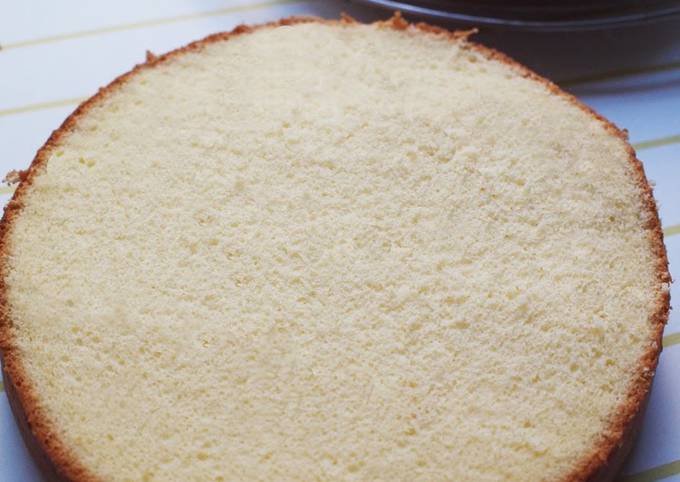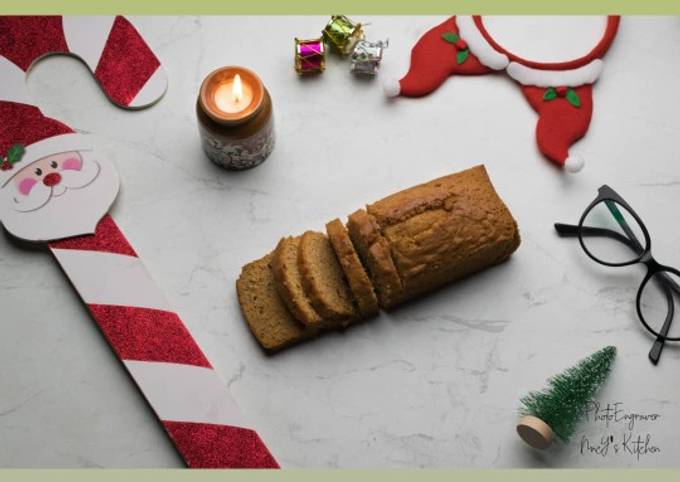
Hello everybody, it is Brad, welcome to my recipe page. Today, we’re going to prepare a special dish, light and moist milk sponge cake. It is one of my favorites food recipes. This time, I’m gonna make it a little bit unique. This will be really delicious.
Great recipe for Light and Moist Milk Sponge Cake. I've tried many different recipes, but I don't like dry sponge cakes. so I adapted my favorite chocolate sponge cake recipe for the moist and milky version! Whisk together the flour and baking powder, and add to egg mixture until just combined. Gradually pour into the batter, mixing constantly.
Light and Moist Milk Sponge Cake is one of the most well liked of recent trending meals in the world. It’s simple, it’s fast, it tastes delicious. It’s appreciated by millions daily. They’re fine and they look fantastic. Light and Moist Milk Sponge Cake is something that I’ve loved my whole life.
To begin with this particular recipe, we must prepare a few components. You can cook light and moist milk sponge cake using 7 ingredients and 33 steps. Here is how you cook it.
The ingredients needed to make Light and Moist Milk Sponge Cake:
- Take 3 Egg whites (large)
- Take 120 grams Granulated sugar
- Get 3 Egg yolks (large)
- Get 100 grams Cake flour
- Take 50 ml ┌Milk
- Prepare 30 grams └Butter (or margarine)
- Make ready 1 dash Vanilla oil
I thought it might be shy on butter by a tablespoon or so but it was just fine as is. I can't imagine how you could goof up on a cake like this. The ingredients are conveniently and readily at hand and it mixes up in just a minute or two. It gives me the proper creeps, makes my teeth grind, skin crawl, feet twitch.
Instructions to make Light and Moist Milk Sponge Cake:
- About the ingredients: I recommend using large eggs. Refrigerate until you're ready to use. You can substitute margarine for butter. Preliminaries: Line the mold with parchment paper. If the paper doesn't stay up, oil the cake tin before lining the paper and it will stick to the oil.
- Put the egg whites in a bowl, and whip with a handheld mixer (make sure that you use an impeccably clean bowl. If it has any water or oil in it, the egg whites won't whip up properly!)
- When the egg whites are evenly whipped, add 1/2 of the granulated sugar and whip together. When it's very fluffy, add the rest of the sugar, and keep whipping until it turns into a smooth, shiny meringue.
- If stiff peaks form when you lift up the mixer, it's done! (It's a must to make the meringue that forms peaks!)
- Add yolks to the meringue and mix well (When the yolks are evenly incorporated, it's done.) Add the vanilla oil.
- Sift the cake flour into the batter. Use a rubber spatula and mix from the bottom using a cut-and-fold motion. It's easier if you turn the bowl with one hand as you mix! (Whatever you do, don't beat or knead the batter. Mix as little as possible)
- Put the butter and milk into a heatproof bowl, cover with plastic wrap and microwave for about 60 to 80 seconds.
- Mix to dissolve (keep on mixing until it's cooled down to about 120°F/50°C).
- Add the Step 8 mix to the Step 6 batter a little at a time (If you add it all at once, the milk butter will sink down to the bottom!) Mix the batter up from the bottom while turning the bowl with one hand, using a cutting motion and working quickly. (Be sure not to beat or knead it at this point too. Mix as little as possible)
- Pour the batter into the lined mold. (Since the batter at the bottom of the bowl does not rise well, pour it around the perimeter of the mold, where it will cook faster.)
- Drop the filled cake pan 4 to 5 times at a height to eliminate any air pockets, and smooth out the surface.
- Bake for 30 to 40 minutes in a preheated 340°F/170°C oven. If you poke the middle with a bamboo skewer and it comes out clean, it's done! As soon as it's baked, drop it from a height of 20-30 cm onto a surface to prevent the cake from shrinking.
- Put a well wrung out moistened kitchen towel on your work surface, and take the sponge cake out of the cake pan. Peel the paper off the sides (flip the cake).
- Put the cake pan back on the cake and leave for 2 to 3 minutes (this is to flatten the surface, and to even out the moisture in the cake).
- Take the cake pan off and peel off the paper from the bottom.
- Turn the cake over, and cool on a cake rack.
- Cover the spongecake with a moistened and tightly wrung kitchen towel, and leave to cool.
- When the spongecake is cool, slice horizontally and fill and decorate as you like (The cake is easier to slice if you let it rest for a day. Keep in a plastic bag).
- How to slice the spongecake cleanly: Mark the sides vertically with a knife so that you can re-stack the layers later.
- If you don't have a cake slicer: Insert toothpicks where you want to slice through the cake, starting with the upper layer, spacing the toothpicks evenly (in 4 to 8 places).
- Slice through the cake on top of the toothpicks horizontally. Slice the lower layer in the same way.
- Re-stack the layers, following the vertical marks you made in Step 19.
- Tip: If you flip the bottom layer over, put the middle layer on top, and the top layer in the middle, the cake will be easier to decorate.
- Optional syrup: Put 2 tablespoons of sugar and 4 tablespoons of water in a small pan and dissolve the sugar. Turn the heat off and add 2 teaspoons of brandy.
- Brush the syrup on the sliced surface of the sponge, and finish with the cream of your choice. (I recommend spreading the cake with cream, then letting it rest for a day before eating! It will become even more moist.)
- The cake is best eaten within 2 to 3 days. It is best on the day it's made, but it's moist and delicious the next day since the cream will have melded with the sponge cake!
- To store the cake: It depends on how you decorated it, but basically it should be stored in the refrigerator. Put it in a cake case or similar so that the cream and sponge don't dry out.
- To make a 12 cm diameter cake: Re-calculate the amounts based on 1 egg (I halve the amounts used for the 18 cm cake). Bake for 25 to 30 minutes (28 minutes works best).
- To make a 15 cm diameter cake: Halve the amount of ingredients used for the 20 cm cake. Bake for 30 to 35 minutes (340°F/170°C, 34 minutes in a gas oven).
- This cake uses a 18 cm cake base, decorated with a double amount of "Sublime Cheese Cream"and a packet of strawberries.
- To make a 21 cm diameter cake: Re-calculate the amounts based on 5 eggs (or multiply the amounts for the 18 cm cake by 1.5). Bake for 30 to 40 minutes (35 minutes works best).
- To make a 12 cm diameter cake plus a 15 cm diameter cake: Use the amount of ingredients specified for the 18 cm or 20 cm cakes (I prefer the latter). Baking times - 12 cm = 28 minutes, 15 cm = 34 minutes.
- When trying to figure out how much batter you need for a particular round or square mold, just keep in mind that you should use 1 egg for every 500 ml of cake batter.
- Ready to serve and ENJOY!
The ingredients are conveniently and readily at hand and it mixes up in just a minute or two. It gives me the proper creeps, makes my teeth grind, skin crawl, feet twitch. And if you hate the word as much as I do, please please PLEASE bear with me through this recipe blog post as there is just no other word to describe this deliciously super MOIST buttermilk vanilla sponge cake. Plain Vanilla Sponge Cake - Moist and Fluffy. Your search for soft and spongy Vanilla cake ends here.
So that is going to wrap this up with this special food light and moist milk sponge cake recipe. Thank you very much for reading. I’m sure you can make this at home. There is gonna be more interesting food at home recipes coming up. Don’t forget to save this page on your browser, and share it to your family, colleague and friends. Thank you for reading. Go on get cooking!

